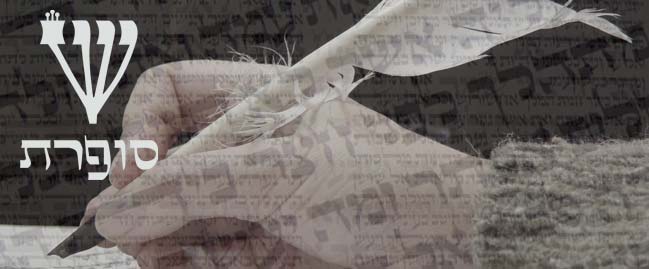TALMUD BAVLI SHABBAT 104a
BS"D
The Sages said to R’ Joshua ben Levi: Today some young children came to the house of study and told us things [about the Hebrew alphabet, which they had just learned] the likes of which had not been said even in the days of Joshua son of Nun:
Alef bet means “Learn wisdom (alef binah).”
Gimel dalet means “Be kind to the poor (gemol dallim).” Why is the foot of the gimel stretched toward the base of the dalet? Because it is the way of the benevolent to run after the poor (to help them out).
And why is the foot of the dalet stretched toward the gimel? Because the poor must make himself available to the benevolent.
And why is the face of the dalet aveted from the gimel? Because help must be given in secrecy, so that the poor will not be humiliated by the presence of the giver.
Hey and vav are two letters that form (part of) the (Ineffable) Name of the Holy One...
Zayin, het, tet, yud, kaf, lammed: If you act thus (as commanded), the Holy One will sustain (zan) you, be gracious (han) to you, show goodness (metiv) to you, give you a heritage (yerushah), and bind a crown (keter) about your head in the world-to-come (le’olam ha’ba).
The open mem and the closed (final) mem signify that one utterance (in Scripture) may be open and another may be closed (esoteric) [and inquiry into it may be forbidden].
The bent nun and the upright (final) nun mean that those who are faithful (ne’eman) when bent with suffering (in this world) will be made upright (in the world-to-come).
Samekh and ayin stand for “Uphold the poor (semokh aniyyim).” (Others say: The two letters stand for “Devise {aseh} mnemonics {simmanim} in Scripture and thus commit it to memory.”)
The bent peh and the (final) open peh signify that there are times when the mouth (peh) should be open and times when it should stay closed.
The bent tzaddi and the erect (final) tzaddi signify that while in this world the righteous (tzaddik/tzodeket) is bent down, in the world-to-come s/he will be enabled to stand erect.
Kuf signifies “holy (kadosh).” Reysh signifies “wicked (rasha).”
Why is the face of the kuf averted from the reysh? Because The Holy One says, “I cannot bear looking at the wicked.”
And why is the upper tip on the crown over the kuf turned toward the reysh? Because the Holy One says: If the wicked (rasha) repents, I will bind a crown over his/her head like the crown over the kuf.
Shin stands for “falsehood (sheqer),” and tav for “truth (emet)”. Why do the letters of sheqer in the alphabet closely follow one another, while the letters in emet are far apart [the alef at the beginning, the mem in the middle and the tav at the end]? Because falsehoods follow close upon one another, while truth is encountered only at intervals far apart.
And why does sheqer stand on one leg [the long stroke of kuf, the second letter of sheqer, extends below the line, so the word looks as if it is standing on one leg], while emet is made up of letters which have (solid) bricklike bases [both the alef and the tav rest on two legs, while the mem has a horizontal bar at its base]? Because truth stands firmly; falsehood does not [B. Shab 104a].














0 Comments:
Post a Comment
<< Home